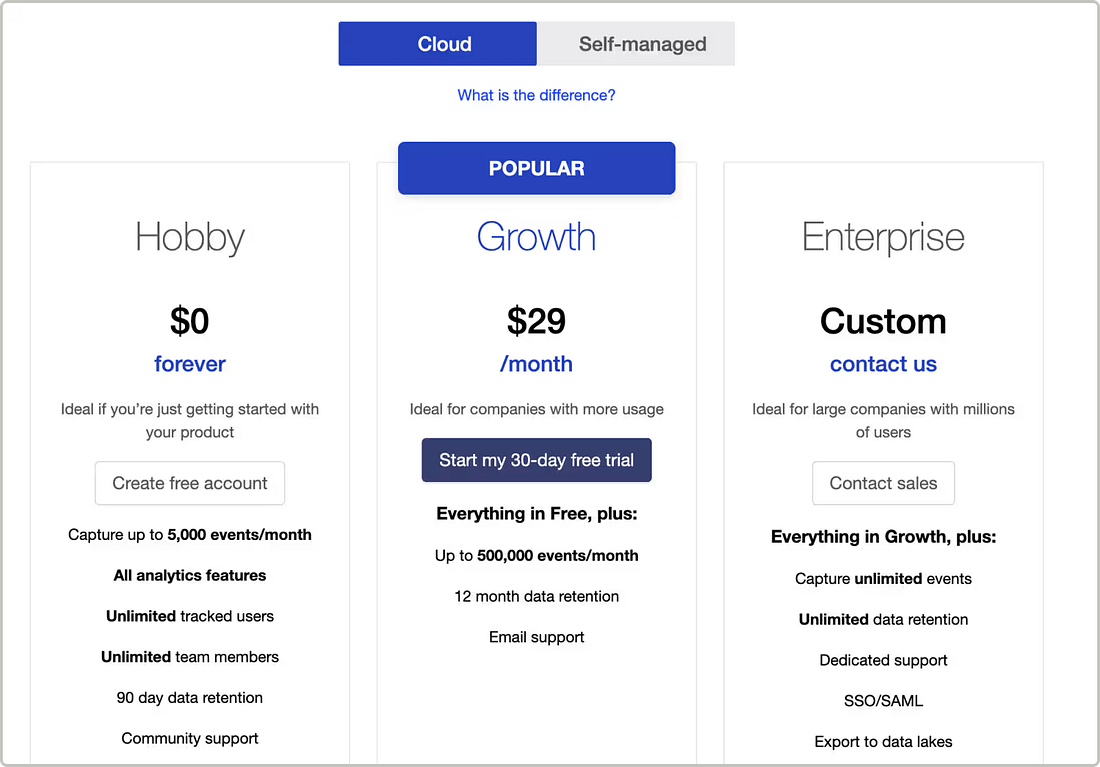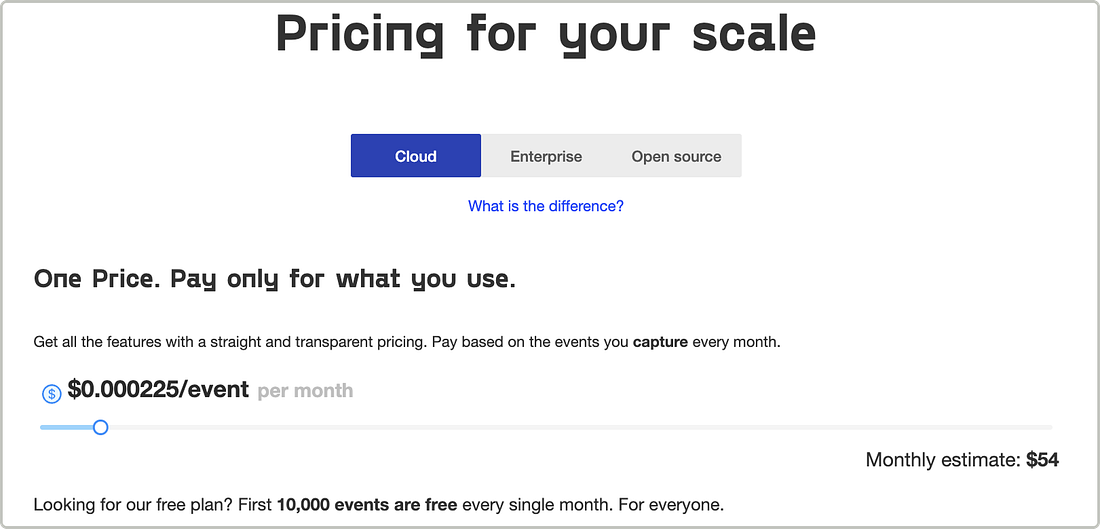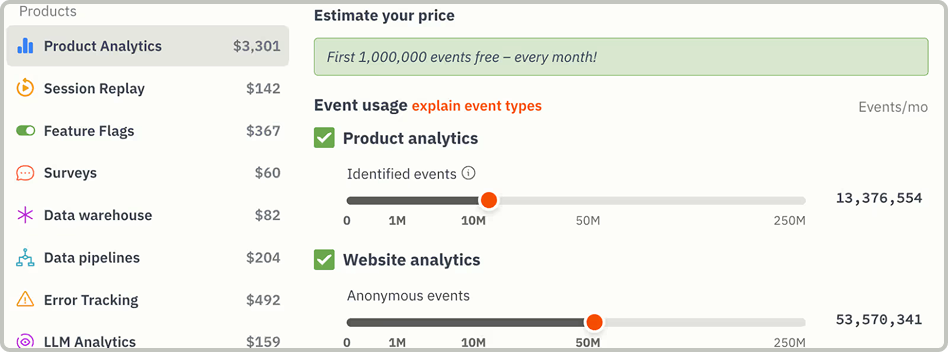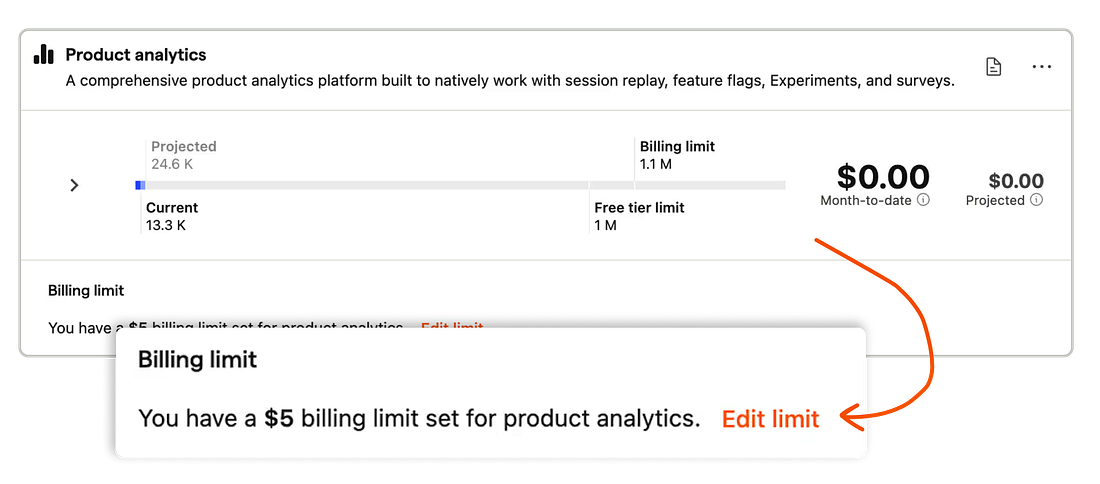Non-obvious pricing advice for startups
Non-obvious pricing advice for startupsCharge anything, changing pricing is OK, and other lessons we've learned at PostHogWe’re constantly thinking, debating, and learning about pricing at PostHog:
This is what we’ve learned.
1. How you price is who you arePricing isn’t just how you make money, it defines your identity, how you market, and how you sell. It’s just as impactful as your product’s functionality or design. To illustrate, let’s imagine two feature flag tools. Feature Flags “R” Us charges by seats and flags created:
This model appeals to companies that ship slowly and make more requests per flag. This means enterprise features, like auditability and access controls, are a priority. The Flag Company of New York charges by requests:
This model appeals to companies who ship faster and want flexibility. They need to be more thoughtful about where flags go in code so they don’t spend too much, which means cost controls and DevEx features, like local evaluation, matter more. In short, how much you charge often doesn’t matter as much as how you charge. While they’re superficially similar products, how these two products charge leads to a totally different experience, and different sales motions, too.
2. Charging anything is better than giving it awayIt’s easy to give things away, especially zero marginal cost software, but it’s a trap for early-stage startups. Typically, startups delay figuring out pricing because:
But, unless you’re building Facebook, you’re always better off charging something as soon as possible, even if the unit economics don’t add up yet. Why? Because paying customers give you different, and more valuable, feedback than free users. They care enough about your solution to give you money, so they’ll care more about it improving. They have skin in the game. This is why acquiring reference customers is a core part of finding product-market fit. Don’t believe us? Consider the fate of Kite, a failed AI coding startup that had 500k monthly active users when it shut down. As the founder reflected in a blog post:
The first three steps worked. They built a “world-class engineering team” and grew the product to 500k developers with “almost no marketing spend.” But monetization let them down. Those developers did not pay to use Kite. All the work on previous steps did not pay off and they had to shut down after seven years. If they had charged earlier, they would have learned faster and possibly avoided the “innumerable sacrifices” they had to make it keep the business going for so long.
3. Frequently changing pricing is totally normalYou’ll almost certainly get your pricing wrong, especially if you are charging early. That’s normal, all companies do it. PostHog’s early pricing was wildly different from our pricing now. In August 2020, we started as a monthly subscription with a limited free tier. Later, in March 2021, we added our first iteration of usage-based pricing for a single product and have kept iterating on this model ever since. Finally, in May 2021, we increased our free tier for events 100x and this combination of usage-based pricing with a generous free tier has been the core of our pricing ever since. All of your favorite companies who aren’t called PostHog change their pricing regularly, too:
Ultimately, changing your pricing when needed means you'll better align the value you create with how you charge for it. For example, we recently changed how we charge for data pipelines from events ingested to rows exported and triggered events because it aligns better with that users actually used.
4. Settle free tier debates before they happenHow much free stuff should we give away? It’s easy to either debate this endlessly, or fall into one of two extremes:
Ideally, there should be nuance to this. The best way to create this (and settle debates) is to have clear principles for your free tier. For us, these are:
5. Billing will become a bottleneckIf you want to go beyond the simple subscription model most billing systems offer, you will need at least one engineer dedicated to it. This has been the case at PostHog as long as I’ve been here. Three years ago, billing was the growth team’s responsibility, but eventually transitioned to a glue team focused on billing, which now has four people and dedicated support engineer. Why do we need so many people involved in billing?
6. Predictable and transparent pricing > simple pricingEveryone hates being charged more than they expected. This, of course, hurts the customer, but it also hurts you, as it leads to more churn and a worse reputation. The solution to this, for many companies, is to make their pricing simpler. Fewer tiers, a unified credit system, a single subscription for everything. For B2B companies, this is a mistake as it limits your ability to charge users for the value they receive. The alternative we recommend is making your pricing more predictable and transparent. Some ways to do this include:
Some may call this “leaving money on the table” but we see it as doing the right thing. I’m sure others have had success with the dodgiest pricing tactics possible, but the trust we’ve built with customers is core to what makes PostHog successful, so we won’t be changing these. Words by Ian Vanagas, free tier enjoyer. 🦔🤵 Jobs at PostHogInterested in seeing all 108 internal pricing RFCs? We’re hiring product engineers and more specialist roles like: 📙 More good reads
|
Similar newsletters
There are other similar shared emails that you might be interested in:






